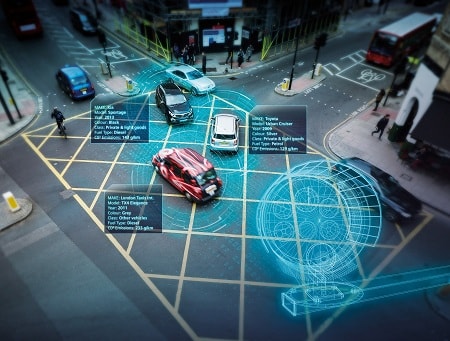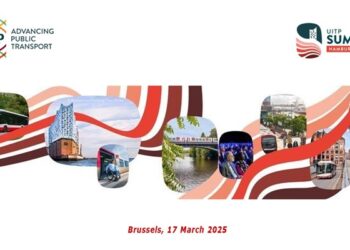Siemens has expanded its industry-leading portfolio of adaptive traffic control software by introducing SEPAC “Peer-to-Peerâ€, new traffic software that allows controllers located at intersections to share information with one another on traffic and pedestrian conditions.
This “connected†capability allows the on-street network of controllers to adaptively respond to changing traffic conditions in real-time. In the field, a controller can transmit information about a large number of vehicles to a controller at the next traffic signal. This allows extra green time for the group of cars to move through multiple intersections, making traffic more efficient for operators and the traveling public. Abilene, TX is one city using the “Peer-to-Peer†technology to increase traffic flow along a heavily traveled corridor.
“The City of Abilene has two state highways meeting at two intersections about 750 feet apart and has elevated railroads passing between them. This was a big problem when time clocks got out of step, making the traffic flow between the intersections very inefficient,†said James Rogge, traffic engineer for the City of Abilene, TX. “Since the implementation of Siemens SEPAC ‘Peer-to-Peer’ functionality, the City has seen significant improvements in traffic flow through this once congested area in Abilene. Commuters have even called the City expressing their contentment with and realization of improvement to traffic flow.”
“Siemens is continuing to lead the industry in adaptive traffic signal control systems, developing a broad variety of technologies to reduce travel time and delays and ultimately solve congestion in cities of all sizes,†said Marcus Welz, CEO of Siemens Intelligent Traffic Systems. “The new Siemens traffic control software includes an innovative approach for on-street, adaptive solutions by leveraging peer-to-peer technology that will make intersections work even harder for drivers and help bring our traffic infrastructure into the 21st century.â€
The Peer-to-Peer feature gives operators a greater level of insight into traffic conditions and more accuracy in adapting traffic patterns to increase flow and ultimately reduce congestion. Also, the SEPAC software can be installed in existing traffic controllers and doesn’t require any additional equipment or IT infrastructure.
For more information on Siemens intelligent traffic technologies, please visit http://w3.usa.siemens.com/mobility/us/en/pages/siemens-mobility.aspx.
Siemens’ Mobility Portfolio: Siemens Intelligent Traffic Systems business unit is part of the Siemens Mobility Division which provides efficient and integrated transportation of people and goods by rail and road – including all products, solutions and services regarding mobility. Siemens designs and manufactures across the entire spectrum of rolling stock including commuter and regional passenger trains, light rail and streetcars, metros, locomotives, passenger coaches and high-speed trainsets. In the U.S., Siemens is providing rail vehicles, locomotives, components and systems to more than 25 agencies in cities such as Washington D.C., New York, Boston, Chicago, Seattle, Miami, Orlando, Philadelphia, Denver, Phoenix, Baltimore, Salt Lake City, Minneapolis, Houston, Portland, Sacramento, San Diego, St. Louis, Atlanta and Charlotte. Cities also rely on Siemens to provide traction-power substations and electricity transmission, as well as signaling and control technology for freight and passenger rail and transit systems. Siemens has transportation manufacturing hubs in: Sacramento, CA; Louisville, KY; Marion, KY; Pittsburgh, PA.
Contact for journalists
Annie Satow
Phone: 202-316-0219;
E-mail: annie.seiple@siemens.com
Siemens Corporation is a U.S. subsidiary of Siemens AG, a global powerhouse focusing on the areas of electrification, automation and digitalization. One of the world’s largest producers of energy-efficient, resource-saving technologies, Siemens is a leading supplier of systems for power generation and transmission as well as medical diagnosis. With approximately 351,000 employees in 190 countries, Siemens reported worldwide revenue of $88.1 billion in fiscal 2016. Siemens in the USA reported revenue of $23.7 billion, including $5.4 billion in exports, and employs approximately 50,000 people throughout all 50 states and Puerto Rico.

































